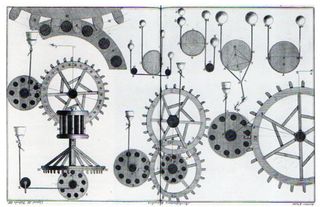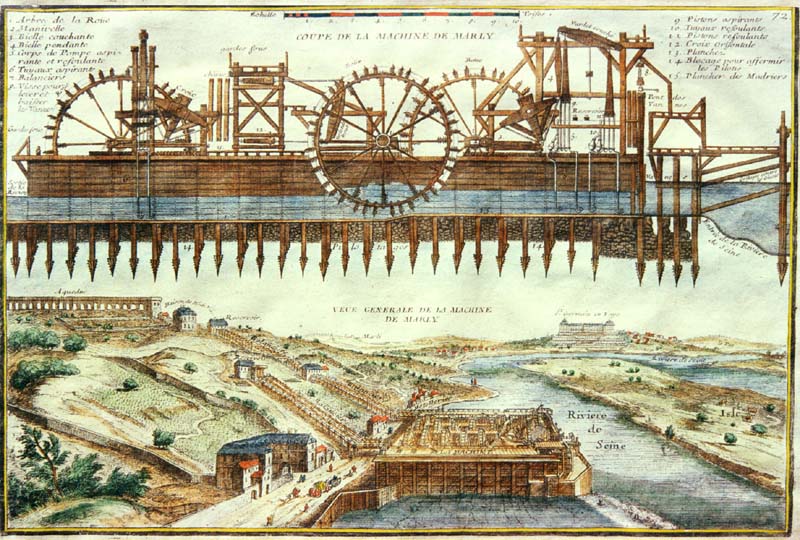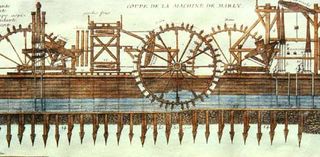JF Ptak Science Books Post 1764 [Part of the Unintentional Absurdist/Surreal series]

I've called on M. de Belidor (1698-1761) before in this blog, using some of the images of his books to describe the Found-Surreal, the Unintentional Dadaist (and so on), images that once slightly removed from their original context take on an entirely new life, sometimes fantastical and odd.
The engraving above is a fine example, an appears innocently (and beautifully, and importantly) in his Architectura Hydraulica (1740), and titled "Demonstration of Friction". I've simply inverted it and removed some of the numerical notation--and then, suddenly, it becomes a sort of Steampunk Balloon Machine--a lovely collection of small balloons lifting large wheels and cogs, assembling some sort of something in mid-air, demonstrating very little friction, of lightness and airiness
Belidor was a remarkable engineer and theoretician who blended the two practices perfectly--actually one of the great issues in his career as trying to disseminate higher levels of techno-competence among people working with machines and using technology to some end. He often found that the skills necessary to reproduce and maintain some of the machines he wrote about to be, um, lacking in the population at large. He was also very transparent in technology's role in military life (which at about the time he was writing was nearly tautological) and tried to apply the advancements he made in that area (as he was a military engineer and soldier) to the industrial and social sphere. In any event he was a very interesting man who produced books that were significant for a half-century or more past his death.
The second image is even more striking, and is not altered at all--the difference in perspective comes with a difference of perspective, which in this case is simply labeling the image as something it isn't, a Massive Steampunk Flying Machine of the 17th Century:

It is nothing of the sort, of course, but if you suspend a little critical thinking then that is what this engraving sort of looks like. In reality it a combined profile of the machine (top of the image) and view of its placement (bottom) of the great technological and engineering feats of the day, a modern marvel, a wonder--the Marly Machine. This was a large, integrated device constructed (over a seven-year-long period and finished in 1684) to pump water from the Seine to Louis XIV's chateaux at Versailles and Marly, and did so magnificently up a 500-foot vertical rise to an aqueduct and then on to the final destinations. Those paddle wheels on the sides of the installation were monsters: 36' in diameter, capturing and releasing the water of the Seine to power 250 pumps which sent the water on its way up the long and steep hill.
Here's a view of the device in situ, with a long course of other implements ascending the hill. [Images courtesy of Marlymachine.org.]
So with a slight suspension of analysis and a little inversion, these two images take on a flighty life of their own, independent of their intended purposes.
Notes:
Belidor was the author of the following works:
- Nouveau cours de mathématiques, 1725
- La science des ingénieurs dans la conduite des travaux de fortification et d'architecture civile, 1729
- Le bombardier français, ou, nouvelle méthode pour jeter des bombes avec précision. Tables, 1731
- L'architecture hydraulique, ou l'art de conduire, d'élever et de ménager les eaux pour les différents besoins de la vie, (1737-1753)
- Dictionnaire portatif de l'ingénieur, 1758



Comments